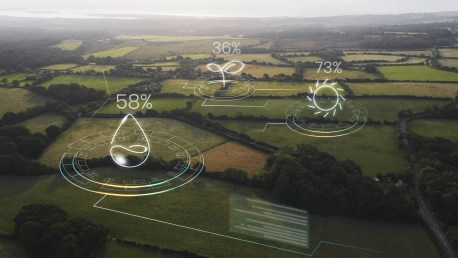In a world increasingly defined by climate change and environmental concerns, sustainability has emerged as a guiding principle, a beacon steering design and production towards a harmonious relationship with nature. Sustainable design intertwines the allure of innovation with the imperative of ecological responsibility—it is the alchemy that transforms raw materials, manufacturing processes, and product lifecycles into a holistic narrative of preservation and respect. This isn’t merely eco-friendly practice; it’s a redefinition of aesthetics, a vow to create without destruction, and a commitment to a future where the beauty of design is matched by its benignity towards the planet. By exploring the multifaceted domain of sustainable design, this article uncovers how designers, manufacturers, and consumers are collectively shaping a world where each creation is considerate of its environmental impact and harmonizes effortlessly with the Earth’s ecosystems.
The Principles of Sustainable Design in the Industry
The transformation of the design industry to embrace eco-friendliness begins with a fundamental reevaluation of resource use. Choosing materials is no longer a mere matter of tactile appeal or durability; it now involves an intricate balance that considers renewability, environmental impact, and energy expenditure. Sustainable design demands a meticulous selection process where materials such as recycled metals, organic textiles, and bio-based polymers become essential components of the designer’s toolkit. With this shift in material choice, designers are turning the industry’s focus towards environmental stewardship, influencing not just aesthetics but also how materials are sourced, used, and eventually retired.When it comes to manufacturing, the sustainable design ethos spills into realms like energy usage and labor practices. Energy-efficient supply chains, solar-powered facilities, and ethical labor conditions are becoming industry standards. Products are meticulously conceptualized to facilitate recycling, minimizing the use of mixed materials and incorporating components that are easily dismantled. The lifecycle of the product, once neglected past the point of sale, is now under scrutiny, with designs being scrutinized for their capacity to be repaired, repurposed, or painstakingly decomposed back into nature, marking a significant transition from a throwaway culture to a regenerative cycle of use.
Innovators Paving the Way for Eco-friendly Design
Within the vanguard of sustainable design, there are companies setting the pace for eco-conscious innovation. IQ LUX, with its commitment to carbon-neutral manufacturing, is not only pushing the envelope in how lighting products can be produced sustainably but also how they can inspire the industry at large. Using 3D printed technology and harnessing renewable materials, IQ LUX exemplifies how sustainability and high-tech design can coexist. With solar power as their energy backbone, they prove that the design sector can achieve high aesthetic standards while keeping carbon footprints minimal.Similarly, Gessi, known for its sophisticated design in fixtures, not only powers its headquarters through renewable energy but also illustrates that the heart of sustainability lies in coexistence with biodiversity. Their landscape fosters bees and other forms of life, reinforcing the idea that sustainable design is as much about creating habitats for others as it is about crafting beautiful products for humans. These trailblazers lay down the bio-ethical blueprint for others in the industry to follow, demonstrating that every facet of operation can be aligned with ecological priorities without compromising the ambition of visionary design.
Redefining Production and Packaging with Sustainability in Mind
The sustainable design revolution reaches into the very core of manufacturing and packaging processes. Start-up stories like that of the OTO Chair by One to One highlight this shift through their minimalist use of resources and commitment to product recyclability. Each chair is designed not only for functional elegance and ease of assembly for the end-user but also with the end-of-life of the product in mind. Pieces can be easily disassembled and materials recycled, transforming what would be waste into reusable resources, setting a new bar for responsible production.Porro, a company known for its understated luxury in furniture design, showcases another facet of sustainable manufacturing. By integrating ‘just in time’ production techniques, they streamline their processes, reducing waste and conserving energy. Here, sustainability isn’t just about using green materials; it’s about refining production processes, marrying automation with artisanal prowess to achieve products that embody superior quality, longevity, and ecological sensitivity through conscious resource management.
The Future of Sustainable Mass Production
Mass production, once vilified as the nemesis of sustainability, is proving to be a fertile ground for innovation. Furniture company Arper’s pieces, such as “Mixu” and “Adell,” demonstrate how large-scale production can harmonize with environmental ethics by deploying recycled materials and sustainable wood sources throughout their product lines. Similarly transformative is the reimagining of packaging solutions. The shift towards using organic fillers like popcorn instead of traditional polystyrene stands as a testament to the creative potential that exists to overturn our wasteful past.Emerging innovations continue to push the boundaries of what’s possible in sustainable design. MarinaTex is an exciting example, symbolizing the potential of biodegradable materials derived from natural waste to displace ubiquitous single-use plastics. Advances in 3D printing technology are being harnessed by pioneers like r3direct, producing objects from recycled consumer materials, showcasing a closed-loop system that reduces waste while still fulfilling our design aspirations.
The Role of Materiality in the User Experience
Beyond functionality and aesthetics, the materials chosen in sustainable design have the profound ability to connect the user to the object on an emotional level. Valentina Rognoli’s research at the Polytechnic University of Milan emphasizes the “Materials Experience,” pushing for eco-materials that stir the senses, forging a deeper connection between the user and the product. This focus encourages more than technological innovation—it fosters an emotional bond that can lead to greater appreciation and longer product lifecycles in our digital, fast-paced world.Sustainable design is rooted in profound respect for materials and their ability to influence user interactions. It’s an adherence not only to form and functionality but also to the user’s sensibilities and the environment’s needs. As production technologies progress and consumption philosophies evolve, the design industry is uniquely poised to lead the charge toward a future where every artifact is a testament to this newfound symbiosis with our planet.









